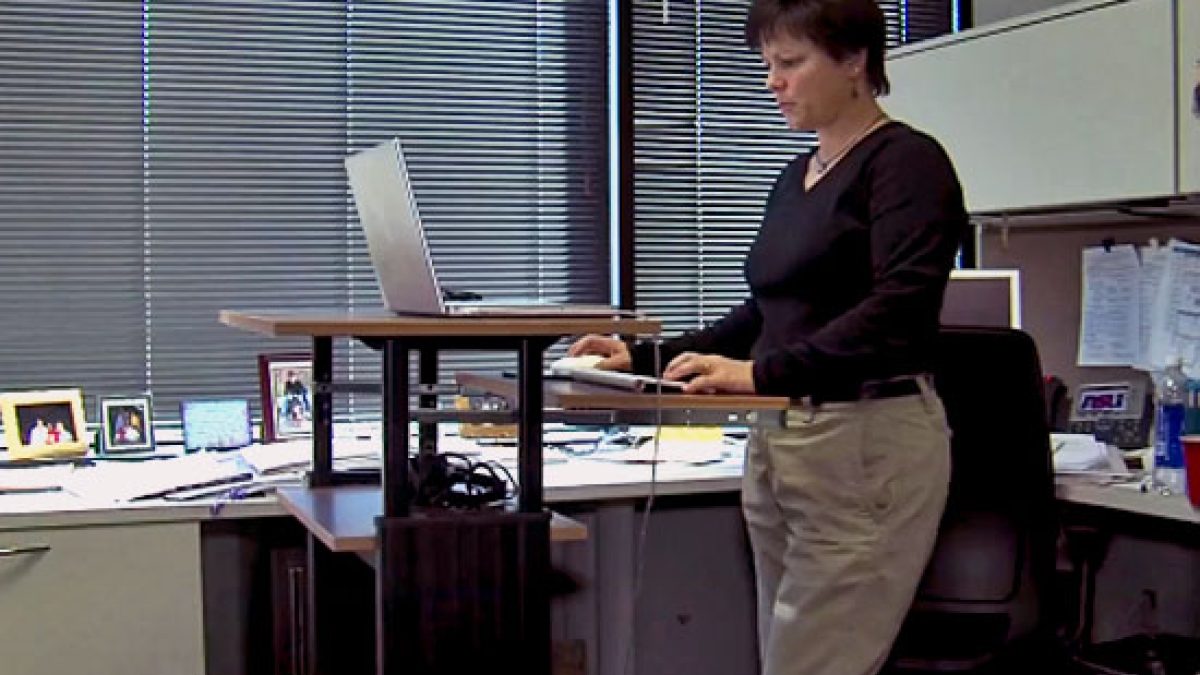Wellness Team encourages university community to get moving

The evidence is substantial – sitting all day is detrimental to your health.
Consider these statistics:
• According to a recent American Cancer Society study, women who sat six or more hours a day have a 37 percent higher risk of death than those who sat fewer than three hours daily. The rate for men was 18 percent higher than those with a more active lifestyle.
• Another study from Australia published by the journal Circulation found that there is an 11 percent increased risk of dying for each hour of television watched per day, suggesting that there may be a connection between sedentary lifestyle and several indicators of cancer risk such as body weight, inflammation and insulin resistance.
• American workers have become increasingly sedentary with jobs requiring moderate physical activity falling to just 20 percent currently from about 50 percent in 1960, according to the journal PLoS One.
Battling the bulge and risk to health that results from too much inactivity is a primary goal of the Arizona State University Wellness Team, made up of personnel from throughout the university who work on initiatives to boost employee health. The team’s work is in line with the mission of ASU’s academic and research initiatives to bring about new healthcare models by moving to positive lifestyle choices.
Recent initiatives include encouraging NEAT activities that can counter the effects of sitting for hours on end. NEAT is a term coined by Mayo researcher James Levine for “non-exercise activity thermogenesis” or simply moving about in daily life without undergoing a major aerobic workout.
Walking workstations have been set up in some university departments to enable employees to be more active while doing their jobs. Employees set their speed up to 2 miles an hour on a treadmill and can adjust the desktop to a comfortable height while they work and walk.
“Standing burns twice as many calories as sitting, and walking burns even more,” said Terri Shafer, associate vice president of Marketing and Strategic Communications in the Office of Public Affairs and a member of the University Wellness Team. “Answering email or doing other computer- or phone-based work for just two hours a day on a walking workstation goes a long way in offsetting the negative effects of a sedentary lifestyle.”
Shafer lost 15 pounds last year by changing her diet and boosting activities such as taking the stairs and using the walking workstation most days a week. She has noticed an increase in energy and productivity since becoming more active throughout her work day.
Encouraging people to move more at work is relatively easy and straightforward when employees incorporate practices such as going to a co-workers desk to talk rather than sending an email, holding meetings standing up, using exercise balls instead of chairs and taking theraband (rubber pieces used for resistance training) stretching breaks, said Jillian McManus, ASU director of Organizational Health and Development.
“Therabands can literally fit in your purse or desk drawer,” McManus said. “It allows you to do resistance training in five minutes right at your desk.”
Part of the challenge of creating a fit workforce lies in changing the culture of a workplace into one that doesn’t sit around. McManus suggests having walking meetings, making sure you have a pair of sneakers under your desk so walking is more comfortable and walking to meetings or appointments instead of taking a cart or driving.
“Every step counts,” McManus said. “There is a large amount of research that shows that activity has tremendous effects on health regardless of weight.”
Improving cardiovascular health and reducing risk factors for chronic conditions – diabetes, obesity, heart disease, depression – are a few of the benefits of moving more, she added.
“Several conditions have co-morbid tendencies such as obesity and heart disease or depression and diabetes,” McManus said. “An effective intervention for all of these chronic conditions is exercise. It can have a profound impact with very few negative side effects.”
Taking the time to invest in your health becomes increasingly urgent when one takes into account the rise in obesity rates that have skyrocketed in recent years.
“The obesity trend is incredibly alarming. The majority of people in the United States will meet the criteria for obesity in the near future,” McManus said.
People who do start making activity part of their routine should see an increase in productivity, decrease sick time and lessen or reverse their chances of developing chronic conditions. And, it’s often a good idea to check with your doctor before starting an exercise program, she added.